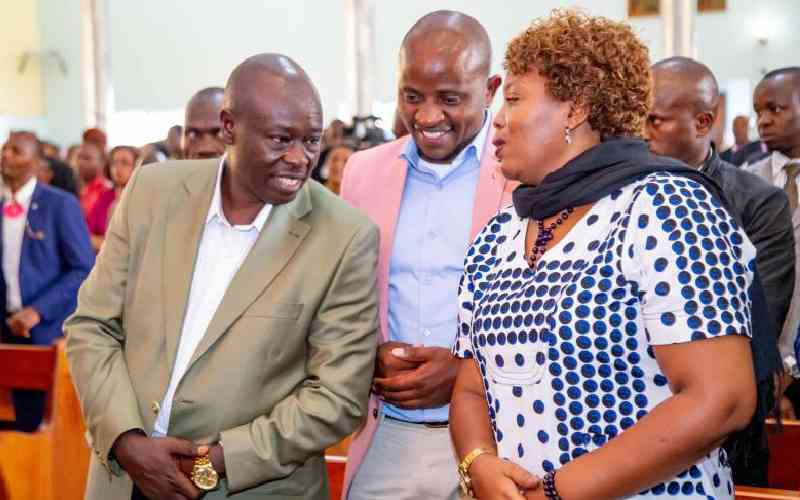Koki Muli
The Independent Electoral and Boundaries Commission (IEBC) is responsible for finalising the demarcation of electoral boundaries for the first elections under the new Constitution (using IIBRC and the Parliamentary committee’s report – according to Schedule 5 IEBC Act). The publication of the proposed county wards and constituencies have generated controversies that require urgent resolution.
The legal framework dealing with electoral boundaries delimitation in Kenya includes: Article 89 of the Constitution; Section 27 of Schedule 6 of the Constitution, and Schedule 5 of the IEBC Act. Section 27(3) of Schedule 6 of the Constitution provides that the requirement in Article 89(2) that a review of constituency and ward boundaries shall be completed at least 12 months before a General Election does not apply to the review of boundaries preceding the first elections under this Constitution. The universal principles guiding boundaries delimitation, which also guide the Kenyan process are: Representativeness meaning boundaries should be drawn such that constituents elect candidates they feel truly represent them and boundaries coincide with communities of interest. Communities of interest can be administrative divisions, ethnic or racial neighbourhoods, or natural communities delineated by physical boundaries.
If districts are not composed of communities of interest, it may be difficult for a single candidate to represent the entire constituency. Equality of voting strength means boundaries should be drawn so that districts are relatively equal in population. Equally populous districts allow voters to have an equally weighted vote in the election of representatives.
Reciprocity means that the procedure for delimiting electoral districts should be clearly spelled out in legislation so that the rules regulating the process are the same. If political concerns are permitted to play a role in the process, then all political parties must be given fair hearing.
Article 89(5) of the Constitution provides that, the boundaries of each constituency shall be such that the number of inhabitants in the constituency is, as nearly as possible, equal to the population quota, but the number of inhabitants of a constituency may be greater or lesser than the population quota to take account of geographical features and urban centres; community of interest, historical, economic and cultural ties; and means of communication. Article 89(7) states that in reviewing constituency and ward boundaries the commission shall consult all interested parties; and, ensure the number of inhabitants in each constituency and ward is, as nearly as possible, equal to the population quota.
Some key challenges that the IEBC needs to address include lack of or inadequate civic/voter education - Kenyans need to know what views they should be submitting to the IEBC. Many of them don’t and politicians are taking advantage of their ignorance and setting the boundaries delimitation agenda; yet the IEBC, supposed to be an independent referee, faces an uphill task. Proposed amendments to Articles 97 and 98 to facilitate allocation of women’s seats to ensure that not more than two thirds of either gender represent the electorate; may require further redrawing of electoral boundaries.
Past mistrust borne from gerrymandering, exclusion, lopsided allocation of resources/development and opportunities based on political support; negative ethnicity and political zoning – the more constituencies a region has the better the chances of winning; proportional representation seats will be allocated based on the number of elected seats a party gets – numbers are some of the reasons why there are so many contestations against the IEBC boundaries.
The writer is an elections and constitutional law expert and lecturer, South Eastern University College
 The Standard Group Plc is a
multi-media organization with investments in media platforms spanning newspaper
print operations, television, radio broadcasting, digital and online services. The
Standard Group is recognized as a leading multi-media house in Kenya with a key
influence in matters of national and international interest.
The Standard Group Plc is a
multi-media organization with investments in media platforms spanning newspaper
print operations, television, radio broadcasting, digital and online services. The
Standard Group is recognized as a leading multi-media house in Kenya with a key
influence in matters of national and international interest.
 The Standard Group Plc is a
multi-media organization with investments in media platforms spanning newspaper
print operations, television, radio broadcasting, digital and online services. The
Standard Group is recognized as a leading multi-media house in Kenya with a key
influence in matters of national and international interest.
The Standard Group Plc is a
multi-media organization with investments in media platforms spanning newspaper
print operations, television, radio broadcasting, digital and online services. The
Standard Group is recognized as a leading multi-media house in Kenya with a key
influence in matters of national and international interest.








